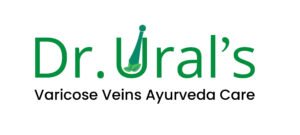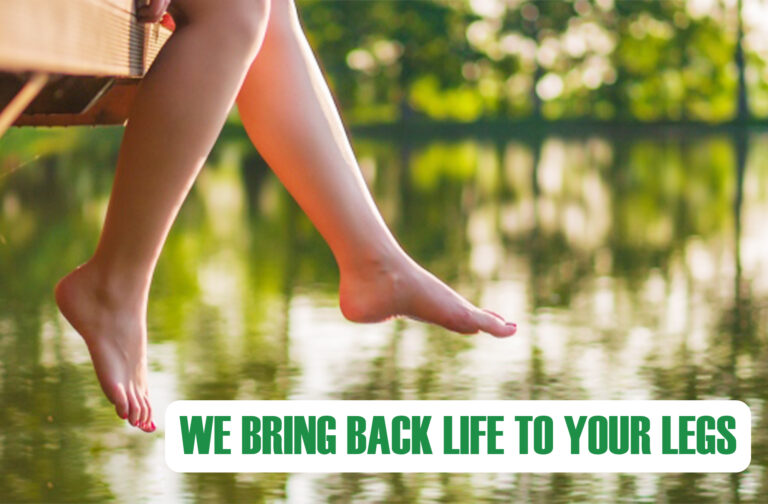
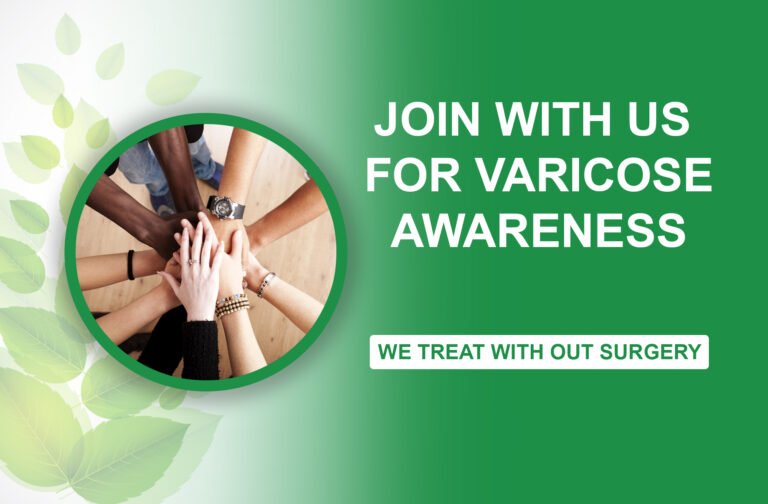
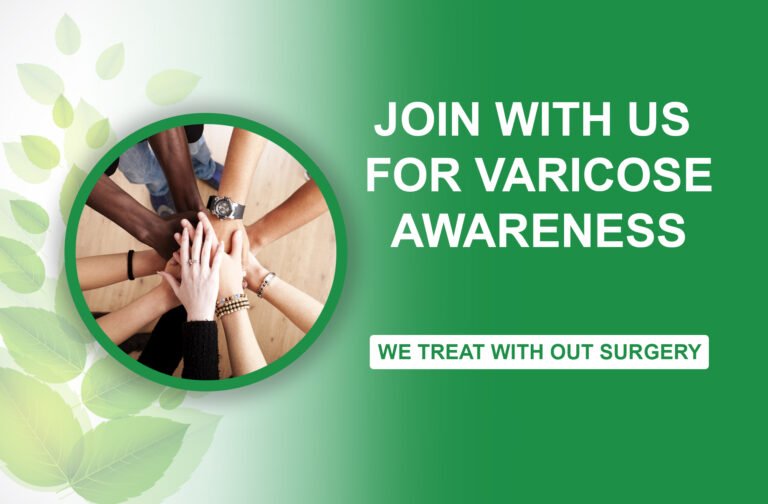
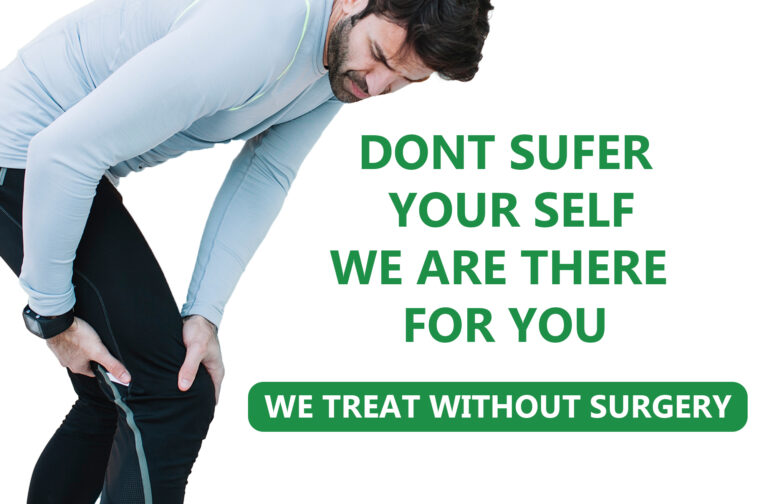
Varicose Vein
The World Health Organisation defines varicose veins as “Saccular dilatation of the veins which are often tortuous.”
Spider veins Reticular veins Feeder veins Varicose veins Swelling of the lower legs
Lipodermatoslerosis Ulcer and open sores
Predisposing causes:
Venous blood flow or venous system is complex for several reasons;
Easily collapsible nature as they are less muscular
The low pressure within the veins in comparison with arteries flow rates that vary from high (during muscle contraction) to almost no flow during quiet standing or sitting positions
Blood flow and valves are naturally towed down by earth gravitational force
Veins are also called “capacitance vessels” because most of the blood volume (60%) is contained within veins.
Once the blood has passed from the arteries through the capillaries, it is flowing at a slower rate as little pressure remains to push the blood along. Healthy legs have veins with smooth, elastic walls that are perfectly designed to adapt to the changes in pressure within a vein hence elderly are more predisposed.
Secondary causes :
This can happen because of age (elderly) as naturally muscles loose tonicity
Tall height
Female gender are twice as likely develop (less musculature)
Pregnancy and childbirth, especially multiple births
Medication like contraceptive or infertility can induce estragon or progesterone
Not enough exercise
Working conditions in sitting or stand for long period’s or lifting heavy weight
Overweight and obesity
Prolonged constipation or standing
Abdominal tumors
Tobacco smoking and alcohol
History of trauma or veins damaging injury
History of deep vein thrombosis in legs
Hereditary
Spider veins, Reticular veins and Feeder veins are grouped under 1st stage of venous diseases but yet they are progressive stages.
Spider veins
Reticular veins
Feeder veins
Dilated < 1 mm
Dilated 1 to 3 mm
Presence of reticular veins and spider veins together
Resembles the tree branches short or jagged lines
Appear flatter and less twisted
Located at the surface skin layers
Appear beneath Skin
Can’t be felt
Can feel but not palpable
Milder form of varicose vein
Moderate form of varicose vein
Pink or Red or Blush or Purple colour
Blue or Green coloured
10-25 % of adults suffer
15-20% adults suffer
Commonly seen in calves, thigh and leg
Commonly seen on thighs legs
No symptoms
Local tenderness
General discomfort
Burning
Throbbing pain
Itching
Varicose veins appear at 2nd stage;
Vein appear twisted or tangled
Veins are dilated > 3 mm
Appear beneath or bulge out of skin or Palpable
Dark Purple or blue coloured
23% of adult suffer
Commonly seen on thighs, legs, ankle and feet
Aching, burning or cramping pain
Feeling of leg heaviness or hardness
Pain worsen after prolong standing
Chronic varicose vein symptoms along with above symptoms are;
Swelling of legs near to varicose veins
Pain on or after exercise
Burning or altered sensations
Restless and tenderness legs
Cramps in legs at night
Oedema in ankle or legs
Skin colour or textures changes
Pruritus (Severe itching)
Note: Symptoms worsen in elderly Not all symptomatic patients are aware of their symptoms ad symptoms and varicose or volume of reflux might be go hand in hand
Foot elevation and moderate walking pain and discomfort
Pain and symptoms might increase during menstrual cycle , pregnancy and hormone therapy
A small number of women regularly experience pain associated with their varicose veins after sexual intercourse
Swelling/ Oedema of the lower legs is the 3rd stage of varicose vein:
Due prong stasis of blood in veins of legs leads to swelling of legs specially in calf muscles, ankle and feet
Raised leg positions above heart level reduce swelling or inflammation as blood circulation improves towards heart
Prolong sitting or travelling either swelling will reappear or worsen
Increased pigmentation, shiny or dull, smooth or rough appearance of skin
Itching or burning or altered skin sensation
Pealing of skin which might lead to ulcer
In chronic stages oozing of slightly sticky watery liquids from swelling
Lipodermatoslerosis (Skin discolouration) is the 4th stage of varicose vein;
Either with all or few previous stage signs and symptoms
Brown – Gray – Blackish discolouration of skin either localised to varicose veins or generalized
Skin feels hard or leathery on touch
Swelling either generalised to localized
Tapering legs above ankle like inverted champagne bottle
Itching, Burning, Altered sensation, irritation in the discoloured area
Shining skin might be replaced with crack with bleeding or watery oozing
Ulcer in leg
Ulcers and open sores is the 5th stage of varicose vein:
Along with above stages signs and symptoms
Ulcers or stasis of blood leading to oozing of watery discharge through skin moist the skin for long period leading to breakdown of skin tissue appears like wet skin I legs and ankle
Slight thick, slight unpleasant odder and slight yellowish coloured watery discharge
Physical examination to see, touch or feel etc.
Vascular or duplex ultrasound may be used to examine the blood circulation in your legs.
- Self-help:
- Reduce weight
- By diet to avoid more strain to veins
- Regular and proper exercise reduce body weight as well as avoid blood stasis and improve blood to move from legs towards heart
- Elevating legs while sitting or lying position
- Avoid prolong sitting or if so happens move legs or walking in-between to improve blood circulation in legs
- Wearing compression stockings to avoid blood stasis which might lead to swelling or reduce chance of blood clot
- Medication might range from pain killers, anti-inflammatory (reduces swelling), blood thinners to avoid blood clot formation or to dissolve and antibiotics in case of infection or ulcers
- Minor procedures or surgery :
- Sclerotherapy:
- Indicated in spider veins, reticular veins but it can also be done in larger veins
- Minor procedure of injecting a solution or foam to shrink (fibrous to make it scar) to permanently close the veins.
- It might require multiple sittings
- Some cases bruising and swelling might appear at site of injection
- Vein ablation:
- Indicated for larger veins
- Lasers or Radio waves are used to close or seal down the vein
- Not guaranteed procedure but most of case it is beneficial
- There is risk of localised numbing or burning sensation or little pain after procedure
- Vein stripping and ligation: Complete removal of superficial vein and tying ( ligate) at before the joining junction to deeper veins
- Venous bypassing to allow blood flow though new path
- Later stage ulcer management and skin grafting are done
- For prevention and to accelerate healing Diet, lifestyle, Yogasana and Pranayama are advised as per the individual need depending on their Prakruthi, Occupation, Age, severity of varicose vein and associated comorbidities.
- Oil application: Specially formulated Dr. Ural’s varicose vein oil is advised to apply very gently (very less pressure) towards heart direction (upwards) for 15 mints / day and leave it for minimum 3 hours
- Helps to improve circulation
- Improve elasticity of veins
- Strengthen the vein, valves of vein and skin surface
- Reduce strain and heaviness of muscles
- Internal medication: Specially formulated Dr. Ural’s varicose vein syrup and tablets are having multidimensional effects in eradicating the cause from root levels,
- By purifier and thinning blood, helps to mobilise stagnated blood in veins towards heart as well as enhance optimal function by stimulating collateral circulation
- By enhancing liver function it optimise quality of blood production and removal of toxins due to stasis
- In Ayurveda blood vessels are originated from blood tissues (UpaDhatu of Rakta). Structural and functional rectification of veins are facilitated by optimized functions of blood.
- Ayurveda concept of tissue (Dhatu) nourishment, Mamsa (Muscle tissue) is successive Dhatu nourished after Rakta, once the formation Rakta is optimum thus naturally it nourish Mamsa to regain its strength and stability in veins i.e., tunica media (muscular) layer of vein and elastic valves regain their strength enabling the function of valves and vein.
- If required bloodletting therapy: One among Pancha shodha (~ Panchakarma) indicated in blood and its related diseases for better and instant benefits are
- Leach therapy (Jalaukaavacharana): Nontoxic leeches are used to suck the blood from the affected area which is pain less procedure and specially indicated in people sensitive to pain like Children, Elderly, Females
- Along with removing stagnated blood it release as chemical known as Hirudinto our body. It is a powerful anticoagulant which is only found in salivary glands of leech does blood thinning, avoid or dissolve the blood clots.
- Venipuncture (Siravyadha): More stasis of blood leading to severe pain, paraesthesia and altered skin colour and texture etc.,
- About 100 to 300 ml of blood is removed just like how blood is drawn during blood test or donating blood but here from the site of varicose vein.
- Pooling or stasis of blood is removed from the site it relives pain, heaviness, muscle cramp and paraesthesia immediately
- Avoid chance of clot formation and it’s further complications
- Physiological blood thinner;Physiologically, sudden blood volume loss is compensated by draining body fluids into blood to avoid hypovolemic shock thus leading to reduction in viscosity of blood which improve circulation.
- Skin discolouration, Swelling and Ulcer: As above treatment procedures reduce blood stasis by improve blood circulation, purification, thinner, improve collateral circulation, and ensure fresh blood flow will reduce swelling easily and ulcer healing might need some time but we are seeing best results with in span of 3 to 6 months
